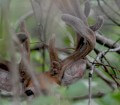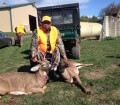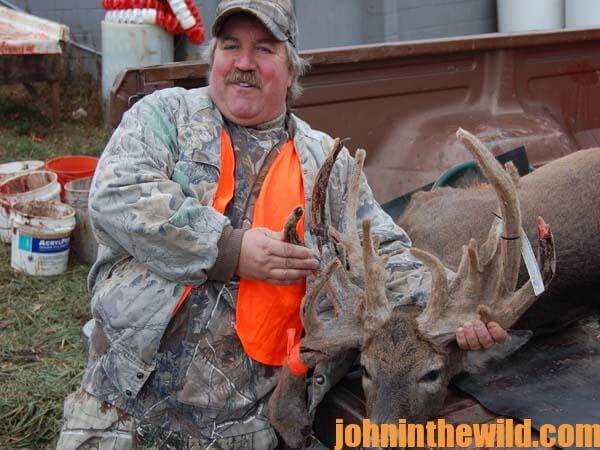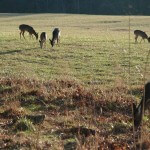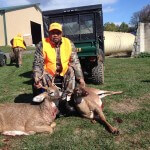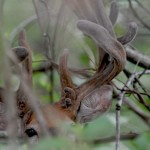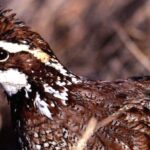John’s Note: Fifty-year-old Mark Clemens from Baltimore, Maryland, who’s been hunting deer for 38 years, is a nuisance deer hunter. He’s on the cutting edge of changes that are being made in deer hunting across the nation. If you live in a gated community or anywhere that you’re seeing deer around your house, you need to realize that right now there are as few deer on your property as there ever will be, unless some type of control measures are instituted to keep deer numbers in check. In a healthy deer population, does will produce from one to three fawns per year with two being the average. In communities that don’t allow for the hunting of these nuisance deer, you easily can see why deer herds in suburbia are drastically increasing. The same is true for rural farms and ranches, especially where agriculture is being produced. Deer love agriculture, especially soybeans, corn, watermelons and other crops. Clemens is one of the new breed of hunters who’s tasked with the responsibility of keeping deer herds at a manageable level. Clemens also enjoys taking wounded vets hunting and introducing youngsters to the sport.
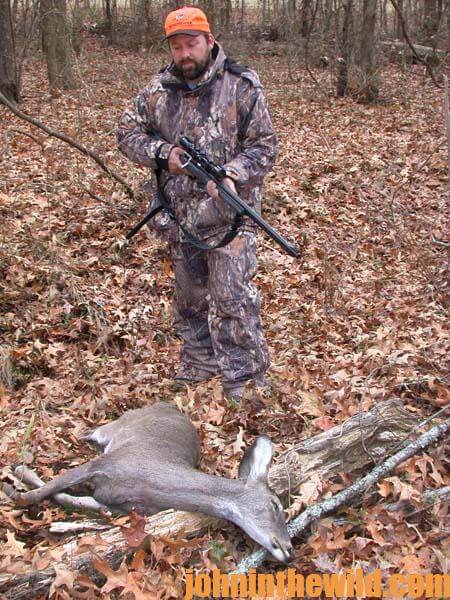 The monster buck I took on the Accokeek nuisance hunt (see Day 2) was really an unusual buck. Most bucks have velvet off their horns by September. This buck was still in full velvet on December 5. I don’t know whether this buck had an injury that caused him not to lose his velvet, or he had a genetic problem that caused the velvet to stay on his antlers. But when I considered the buck was in full velvet and that he had a drop tine, I knew for certain this buck was not only the biggest buck I ever had taken, but he was also the most unusual buck I ever had harvested.
The monster buck I took on the Accokeek nuisance hunt (see Day 2) was really an unusual buck. Most bucks have velvet off their horns by September. This buck was still in full velvet on December 5. I don’t know whether this buck had an injury that caused him not to lose his velvet, or he had a genetic problem that caused the velvet to stay on his antlers. But when I considered the buck was in full velvet and that he had a drop tine, I knew for certain this buck was not only the biggest buck I ever had taken, but he was also the most unusual buck I ever had harvested.
Before long the landowner, who had been one of the organizers who had planned the hunt and picked the properties the hunters had permission to hunt on, showed up. These landowners were very anxious to have some of the deer removed from their properties. Before the hunt, they had told us, “You shoot them, and we’ll drag them out for you.” I took my big buck that day, and I also harvested five more does, and the landowner dragged them out also. On the day I took my big buck, 30 other deer were harvested that morning. The weather was bad, and the majority of the hunters came out of their stands early.
 In three days of hunting nuisance deer in the Accokeek community, we harvested more than 100 deer off the properties. The day before I took this buck, I took nine other deer. On the deer tag I had, I was allowed to harvest two bucks and 10 does. All the deer taken on this hunt were processed and donated to a food bank to help feed the hungry. Once the surplus deer were harvested, they were all put to a good purpose. Too, when I got to my truck each morning after the hunt, hot coffee and cookies would be sitting on the hood of my truck with a thank you note for my being willing to come and help the landowners solve their problems of too many deer on their lands.
In three days of hunting nuisance deer in the Accokeek community, we harvested more than 100 deer off the properties. The day before I took this buck, I took nine other deer. On the deer tag I had, I was allowed to harvest two bucks and 10 does. All the deer taken on this hunt were processed and donated to a food bank to help feed the hungry. Once the surplus deer were harvested, they were all put to a good purpose. Too, when I got to my truck each morning after the hunt, hot coffee and cookies would be sitting on the hood of my truck with a thank you note for my being willing to come and help the landowners solve their problems of too many deer on their lands.
To get John E. Phillips’ Kindle eBooks and print books on hunting deer, “How to Hunt and Take Big Buck Deer on Small Properties,” (John’s latest book), “How to Hunt Deer Up Close: With Bows, Rifles, Muzzleloaders and Crossbows,” “PhD Whitetails: How to Hunt and Take the Smartest Deer on Any Property,” “How to Take Monster Bucks,” and “How to Hunt Deer Like a Pro,” or to prepare venison, “Deer & Fixings,” click here.

